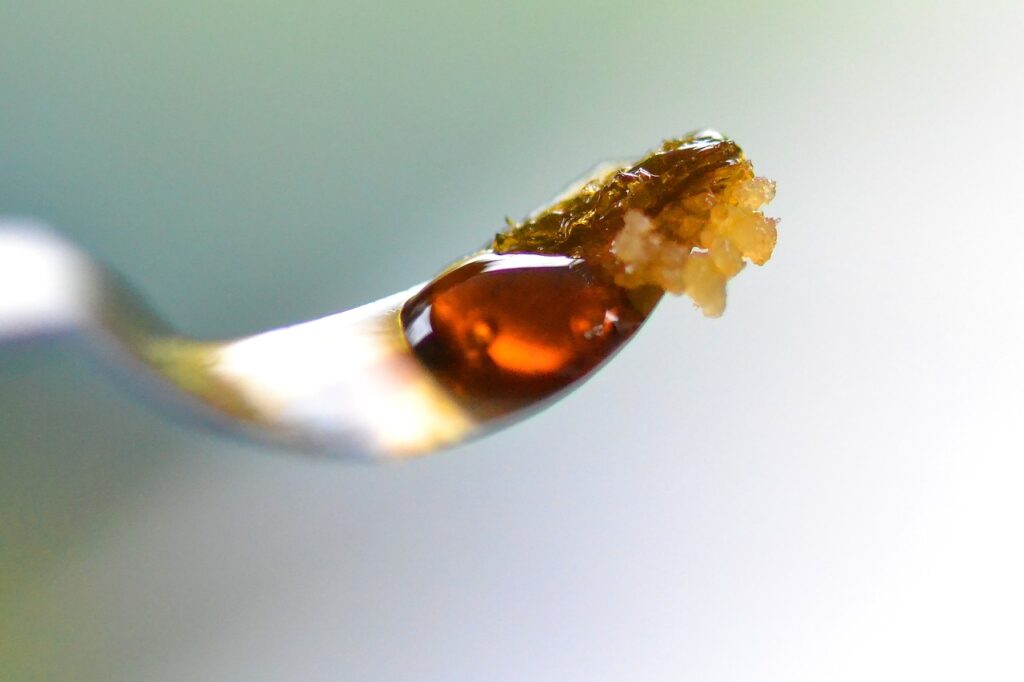Tobacco smoke is well-known as a contributor to a number of lung diseases, including emphysema and bronchitis, as well as lung and throat cancer. The hypothesis followed that marijuana smoke should also contribute to poor lung health, and that inhaling cannabis would similarly cause cancer, etc.
Read more: Adverse Health Effects of Marijuana Use
Currently, however, those effects remain only as hypothesis: After numerous studies on both humans and animals, research does not conclusively support that cannabis use causes higher rates of cancer, or other lung diseases.
But whether you’re a daily user or only puff every now and again, whether you use for medical reasons or are trying to break the Guinness Book of World Records for the largest dab in history, smoking is going to have an effect on your lungs. And, no matter what your preferred mode of inhalation might be, it’s important to consider your lung health in the long term.
And the effect that cannabis has on your lungs isn’t a self-contained phenomenon: Understanding what smoking does to your lungs is also a crucial part of understanding the industry as a whole, as well as the inspiration behind continuing studies, research and development to ultimately improve the cannabis experience into one that is safer, and healthier.
The following is an in-depth look at the relationship between cannabis and lung health: We’ll discuss not only the basics of how the cannabis affects your lungs (in both the positive and negative ways), but also how those affectations change depending on what cannabis product you’re smoking, and, perhaps most importantly, how the differences between them drive innovation in the industry.
Lung Health: Breathe In, Breathe Out
As you breathe in, the muscles in your throat pull oxygen into the airways that lead to the alveolar ducts. Here your lungs go to work, taking in the oxygen and swapping it out for the toxic carbon dioxide (co2) that you exhale: microscopic alveoli in your lungs push the oxygen into your bloodstream and pull out the co2.
That’s breathing in a nutshell. It’s also what makes it possible for the weed smoke you inhale to get into your system, allowing you to feel the effects of THC.
Fun Fact: Cannabis smoke has a lot of space to travel through your lungs: Around 1,500 miles, in fact. That’s longer than the distance between Los Angeles, California and Lincoln, Nebraska.

Differences Between Smoking and Vaping for Lung Health
Dried marijuana flower is the most common way to ingest cannabis. You can either smoke or vape these flowers, and your lungs will interact differently depending on which way you choose.
The type of cannabis product you’re inhaling also makes a difference when it reaches your lungs.
Smoking dried cannabis flowers, be it through a bong, bowl, blunt, joint, etc. is the method that will leave the highest amount of harmful chemicals in your lungs (you only want the cannabinoids, terpenes, and flavonoids – everything else is extra, and potentially toxic). In fact, cannabis smoke is often compared to tobacco smoke: Studies have shown that smoke from smoked cannabis flowers will have many of the same tar and carcinogenic compounds found in tobacco smoke.
Vaping, on the other hand, can reduce the exposure to those toxic carcinogens you get from smoking. “Vaping” means simply that you’re heating the marijuana at lower temperatures, specifically, lower than the combustion point of the plant. As the compounds in the flower convert into gas when heated at a temperature below combustion, vaping will free them into your system before they start to burn.
Basically, vaping cannabis is easier on your lungs. This has led to a rise in popularity of portable vaping devices and has made vaping cannabis flowers more available to the masses. It’s an innovation driven by the desire to consume cannabis in healthier, safer ways.
And vaping concentrates is the best things for you: Concentrates are created when only the desirable compounds are extracted from cannabis, making them rich in cannabinoids like THC and CBD and the terpenes that gives strains their unique and special flavors.
And, even better, is what concentrates don’t include: Excess, unnecessary plant matter. As vaping flower heats the marijuana slower and at lower temps, as we mentioned earlier, it also means you’ll inhale less burnt plant matter.
The same plant that matter that contains tars and toxic chemicals you get when smoking.

Striking (Cannabis) Oil
CO2 oils (sometimes known as solvent-free oils) are your best option: They don’t require any additives to make the oil viscous enough to work in your average vaporizer. Vaping CO2 oils is one of the best ways to take care of your lung health.
See, when it comes to oil, viscosity makes all the difference. Oil that’s too sticky or too thick or too thin can make for an unpleasant, and ineffective, vaping experience.
This is why additives are often introduced into oils – or at least they were. These additives thin out cannabis and hash oil when it gets too thick to properly vape. As producers have used things like polyethylene glycol, propylene glycol, vegetable glycerin, and other concerning chemicals, however, the controversy has been growing and oils made with additive have become increasingly unpopular.
The purest way to inhale your cannabis?
Distillates, as in, ultra-refined cannabis oils.
But even distillates aren’t always perfect, even if they’re the purest. Distillates are full of cannabinoids, and, really, that’s it. There’s nothing else to them. They’re even free of those tasty terpenes we mentioned earlier that gives strains their individual scents and flavors.
This also makes them very thin, so producers often use additives here as well – make sure you know what you’re getting so that you’re vaping as pure as possible.
Cannabis Does Have An Effect On Your lungs
Smoking marijuana does cause visible and microscopic damage to the large airways of the lungs. But that doesn’t come as a surprise: Even hot air can irritate your lungs.
The interesting juxtaposition is that cannabis is also well-known in the medical community as an anti-inflammatory drug, which might have something to do with the fact that lung inflammation isn’t a problem in cannabis users the way it is with tobacco users.
But there are many of these sorts of juxtapositions when it comes to cannabis. Much of what researchers have assumed (in the hypothesis linked above, for example) about the effect on lung health hasn’t turned out to be true.
In fact, the opposite has turned out to be true in some cases: Potential anti-tumor effects of THC, CBD and other cannabinoids have been discovered in recent tests. And, along with known anti-inflammatory and anti-tumor qualities, studies have also shown cannabinoids to be antioxidants as well, protecting the cells and cell DNA in your lungs from the damage associated with carcinogens.
All that can really be said for certain is that any extent of that harm, damage, or illness caused by cannabis use is still greatly undetermined, and the root cause is equally so. What is clear, for now, is that vaping is a healthier alternative to smoking: If you’re concerned with lung health as it relates to cannabis use, go with a vaporizer instead of a joint.
And, if you’re really, really concerned about your lung health, you can always stick to edibles.






